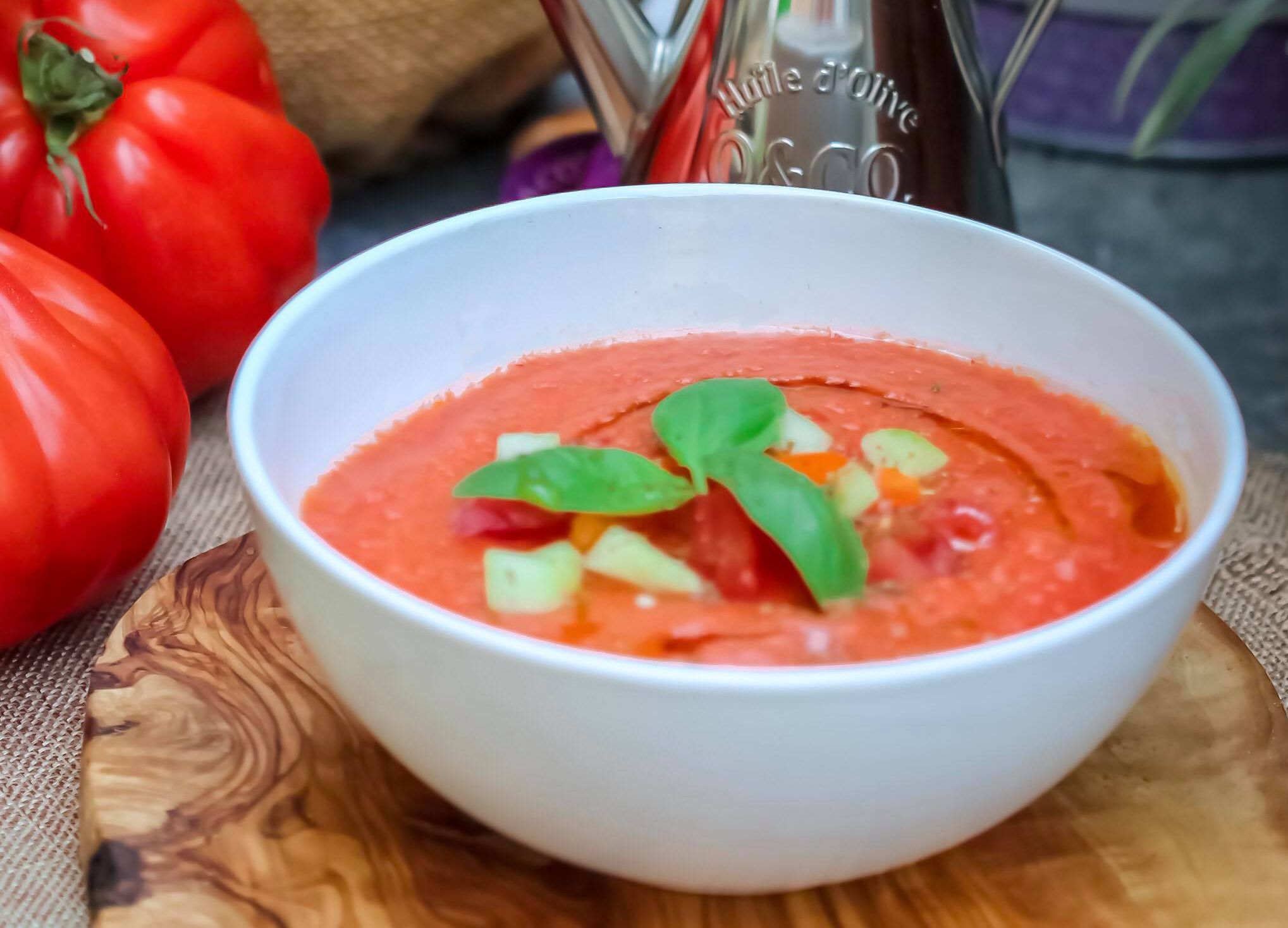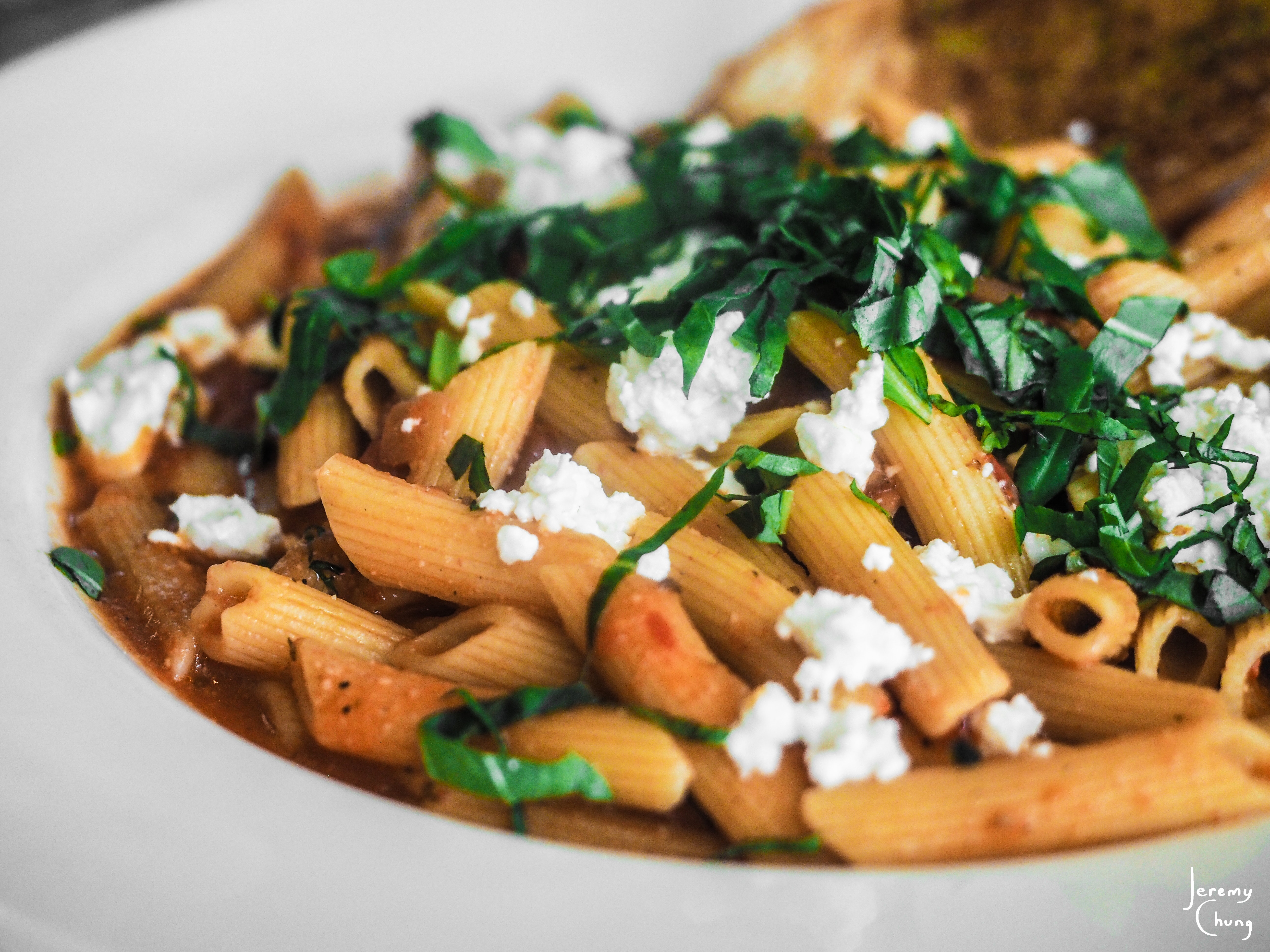The classic Spanish gazpacho is one of the best loved chilled soups for the warm Summer months made anywhere in the world. The recipe is simple to make, which is another reason for its popularity, as only a simple blender and some fresh vegetables are required to complete the refreshing dish.
The exact origins of gazpacho are unknown, but many theories chart the movement of either the Moors or the Romans into Spain and Portugal during ancient times as the start of the recipe. For many experts an ancient soup made by the Moors, which consisted of bread, olive oil and garlic is the forerunner of the classic Spanish gazpacho; for others, a vinegar based soup popularized by the Romans and taken around Europe with the Empire is the origin of the soup. Whichever conquering Empire is responsible for the invention of gazpacho, the classic tomato based soup has now been adapted to include seasonal vegetables for a refreshing Summer soup. In recent years the basic gazpacho recipe has been adapted to replace tomatoes with almonds, melon and grapes.
To begin any gazpacho recipe the first task is to find a bag of high quality tomatoes, freshly picked tomatoes are always the best choice. Farmers markets often have large quantities of freshly picked, often organic tomatoes in abundant supply during the Summer growing season. But, any tomatoes can be used that are found in large supply at a grocery store or supermarket. It is important to determine which other vegetables are to be placed into the mix, classic Spanish recipes often call for Summer vegetables, such as bell peppers, onions and garlic. Wash and roughly dice these vegetables before beginning to blend the ingredients together.
To create a classic style Spanish gazpacho recipe it is important to remember the ratio of tomato to other ingredients should always favor the tomatoes. In general, a three parts tomato to one part other ingredients ratio is favored to maintain the strong tomato flavor that is the hallmark of gazpacho. In a blender place the vegetables, usually with the juiciest at the bottom of the blender, tomatoes placed at the bottom of the blender make it easy to blend the other ingredients to their required texture. Add the roughly chopped garlic, onions, bell peppers and peeled cucumbers tightly into the blender.
For a classic Spanish gazpacho a little sherry or red wine vinegar should be added for an authentic Spanish taste, a splash of olive oil can also be added to keep the recipe within the realm of the healthy Mediterranean diet. herbs are also usually added, often in the form of parsley to keep the recipe light and Summery. Season with salt and pepper to taste before blending the ingredients together, for those who like a smoother texture the ingredients should be blended for longer or for less time for a chunky soup.
A country style gazpacho soup authentic to rural regions of Spain can be created with the addition of a little rustic style bread. Rip up the bread roughly before soaking it in water for thirty seconds, or until the entire piece has taken on the water. Once soaked the bread should be gently squeezed to remove any excess water and be thrown into the blender with the pureed ingredients. Again blend the ingredients until they reach the required texture, once the blending is complete the gazpacho will have a thicker texture than other recipes.
Once the gazpacho is blended to the correct texture it requires chilling overnight, before chilling the gazpacho it should be tasted and seasoned to taste with olive oil, sherry vinegar, salt and pepper. Place the soup in a refrigerator overnight, when ready to serve this chilled soup croutons can be added, or a few roughly chopped vegetables to provide texture to a smoothly blended soup. Before serving a simple drizzle of olive oil should be added to the gazpacho for an authentic Spanish flavor. As Spain is known for its impressive array of seafood an impressive accompaniment to any gazpacho dish is shrimp, lobster or crab. As gazpacho is a common dish found throughout Spain and Portugal, regional variations of the dish can be created, which include the addition and boiled eggs and ham as a garnish for rural recipes.









